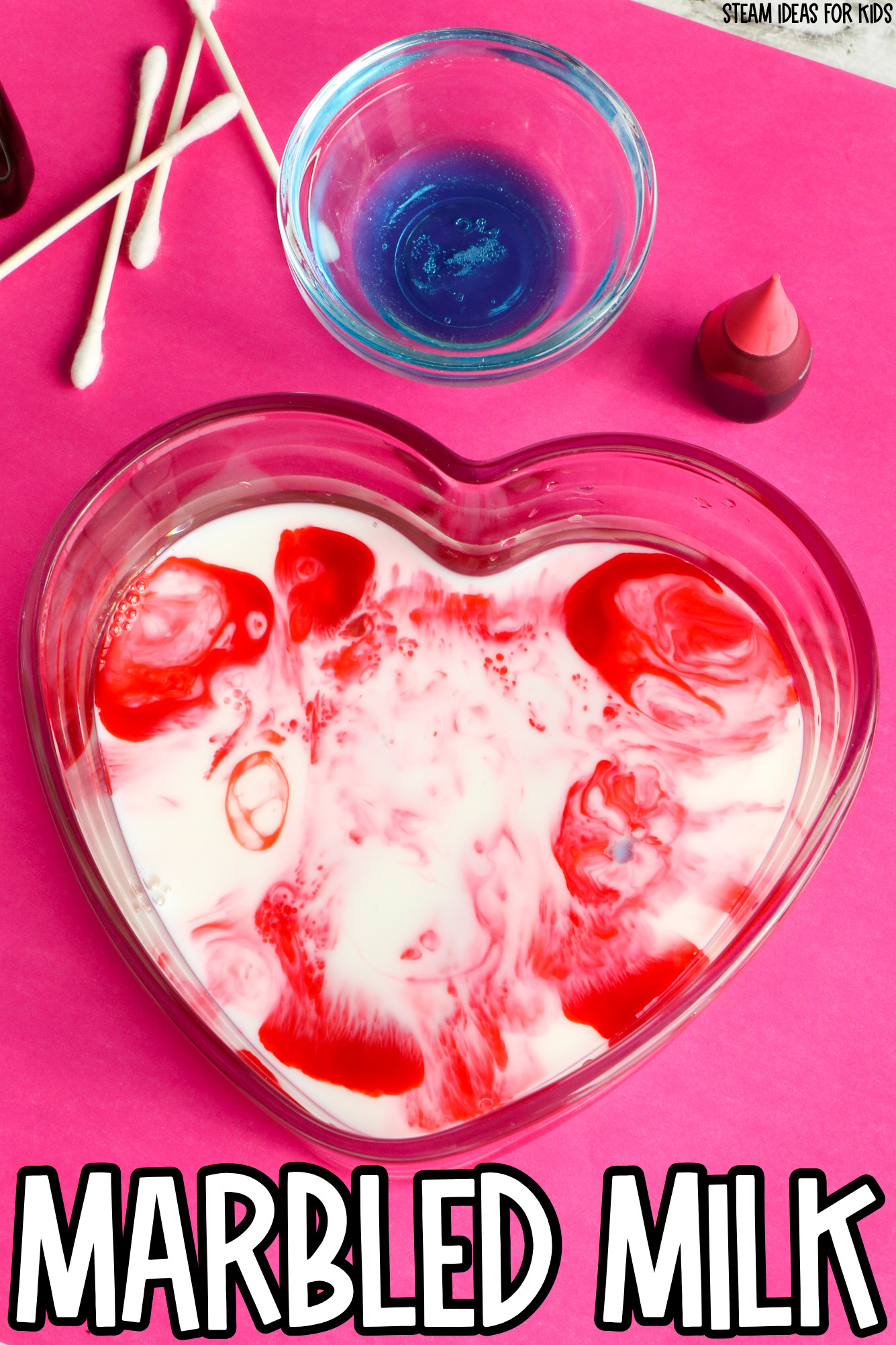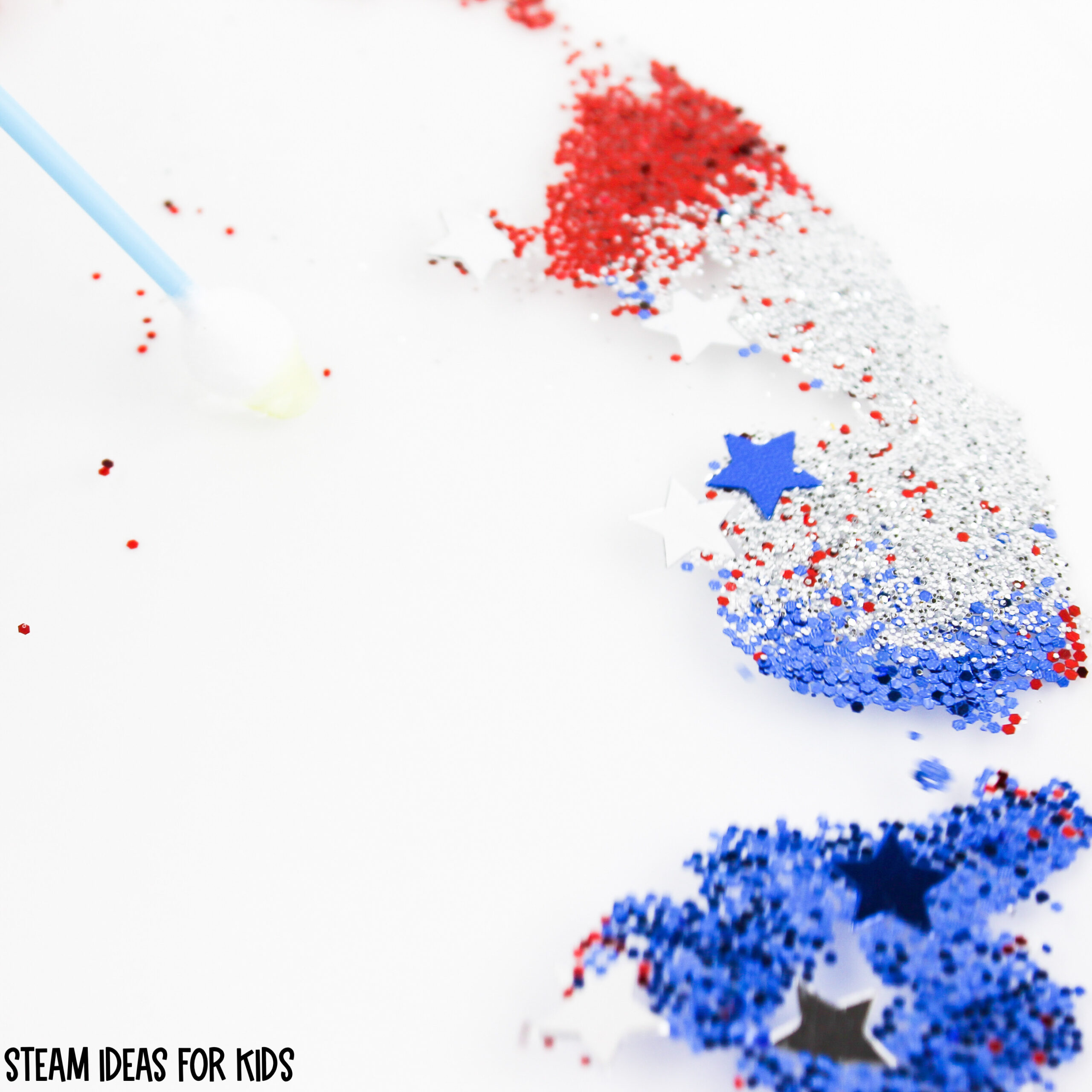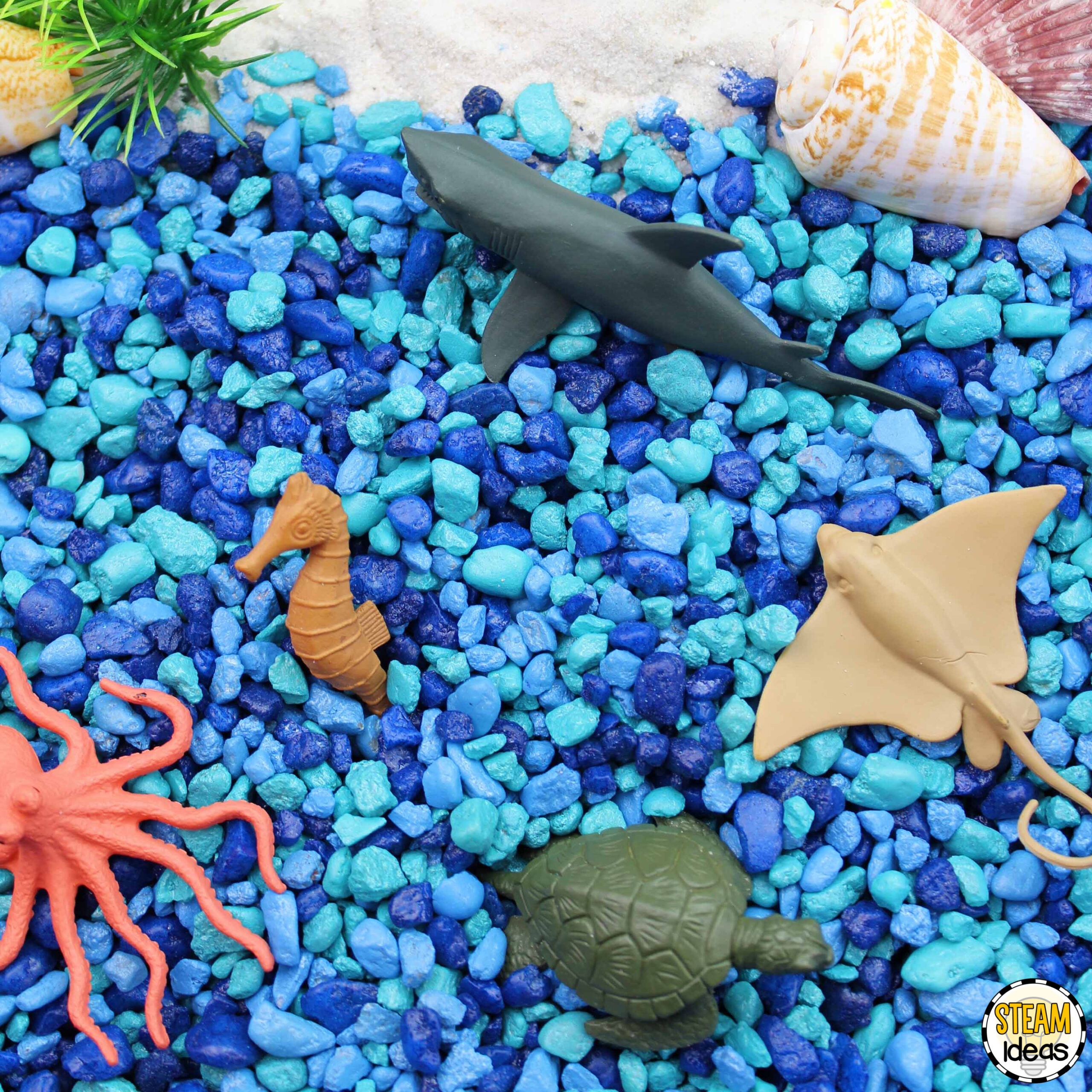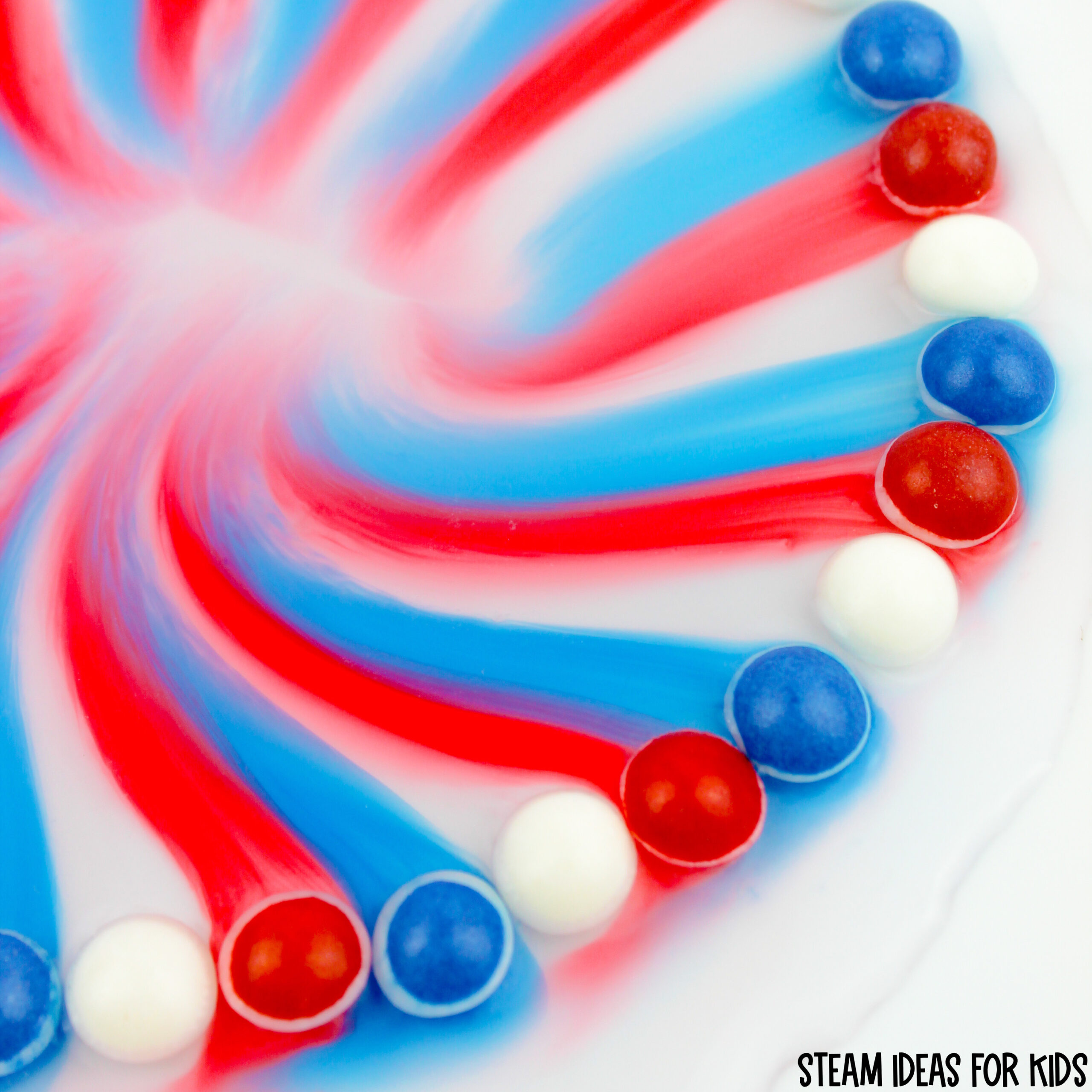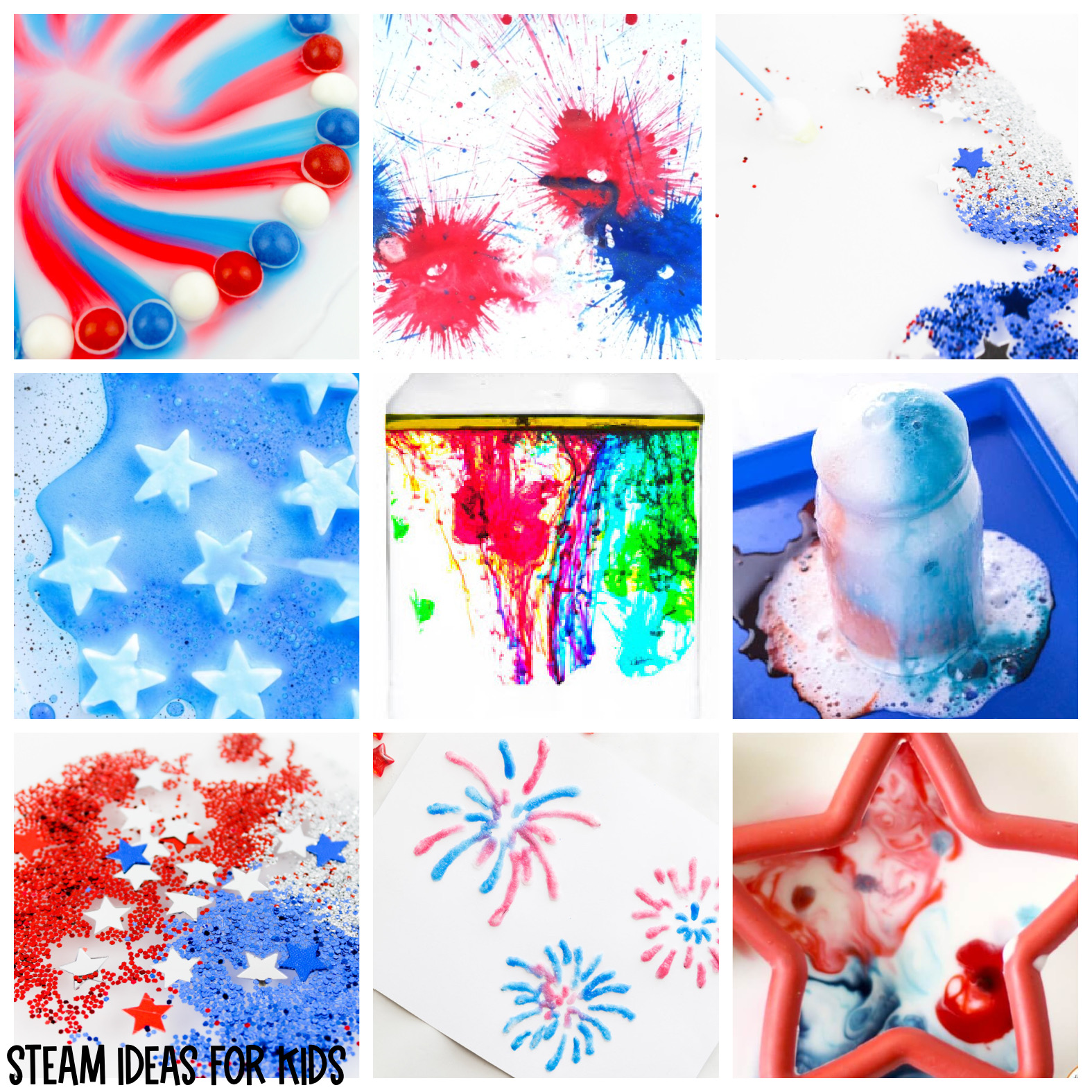Valentine’s Day Marbled Milk Science Experiment
Are you looking for simple science experiments for kids to do on Valentine’s Day? This Valentine’s Day Marbled Milk Science Experiment is a fun way for your students to learn about chemical reactions!
It’s an easy activity that can be done with your young scientists in preschool and kindergarten.
What You'll Find On This Page
Valentine’s Day Marbled Milk Science Experiment:
This marbled milk science experiment is easy to set-up, inexpensive, and so much fun!
It’s an engaging activity to do on Valentine’s Day with the students in your classroom, the kids in the co-op, or your children at home.
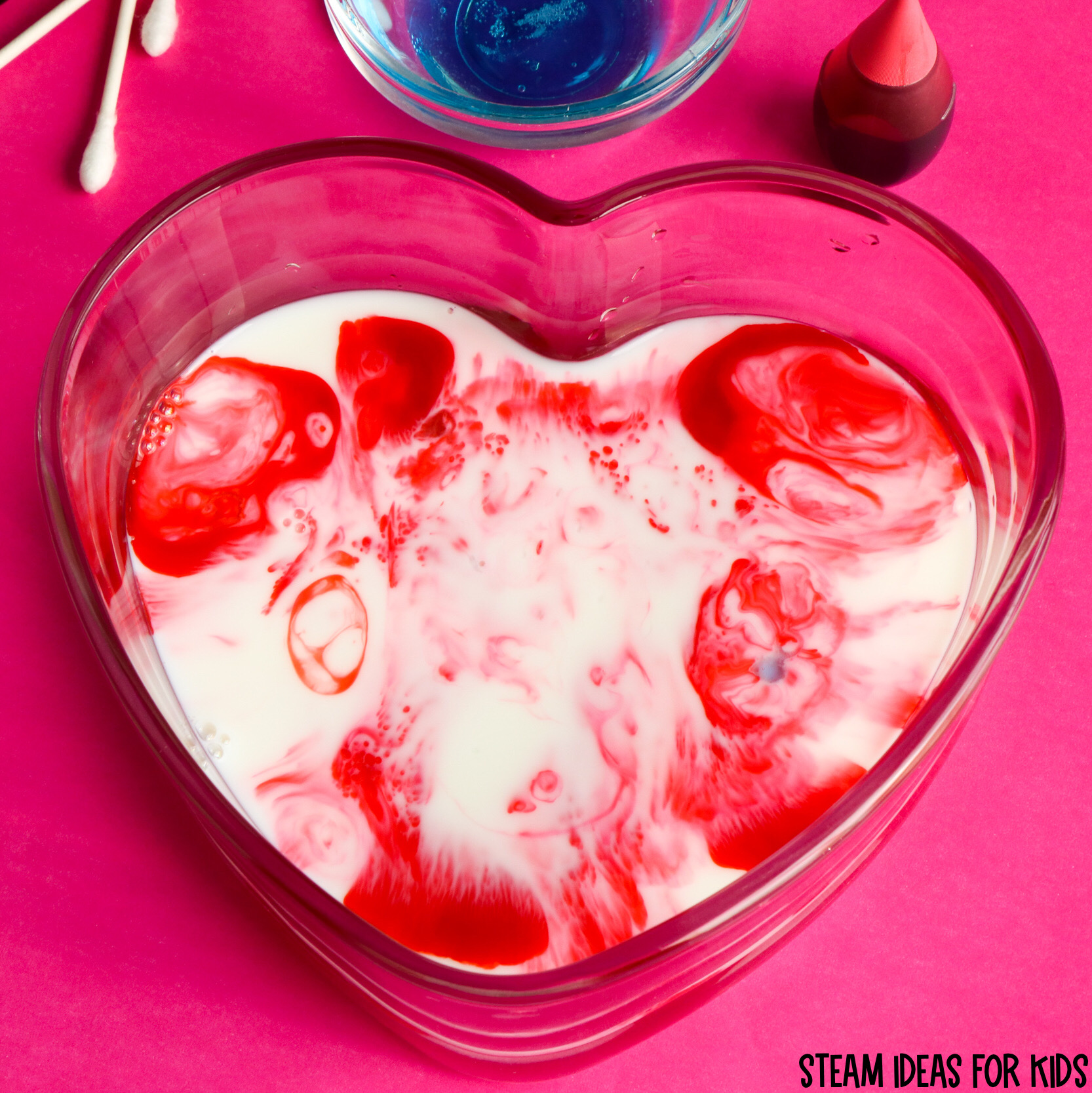
Why Is Science Important In Early Elementary?
Not only are science experiments entertaining, but your kids can learn many important skills such as problem solving, critical thinking, and decision making.
Through hands-on science activities your children can also practice asking questions, observing, recording data, analyzing the results, and drawing conclusions.
Getting Ready To Do The Valentine’s Day Marbled Milk Science Experiment:
This post may contain affiliate links. Please read our disclosure here.
What’s Needed:
- Heart-Shaped Bowl
- Milk (about 1 cup)
- Red Food Coloring
- Small Bowl
- Liquid Dish Soap
- Cotton Swabs
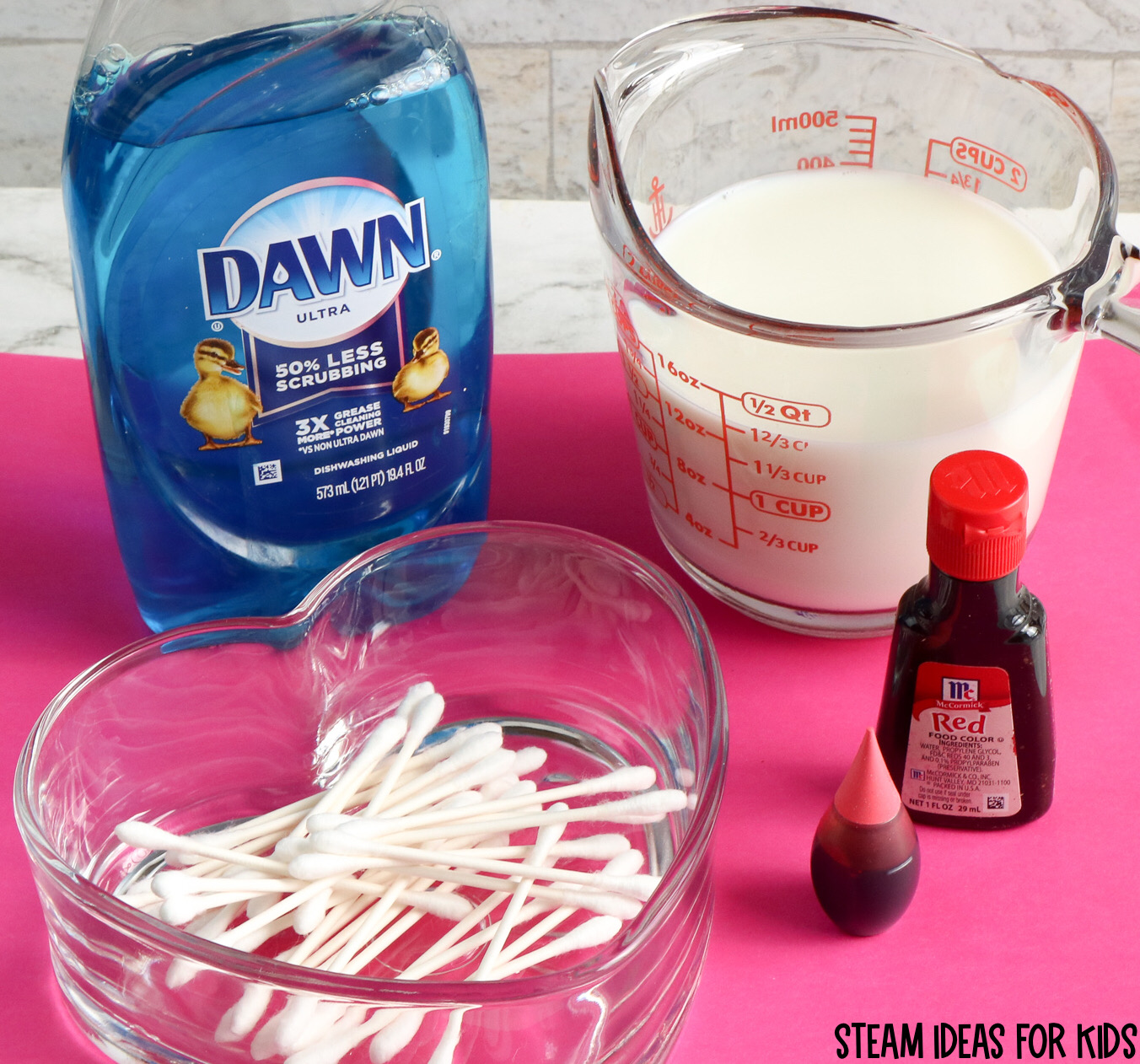
If you are doing this science activity with a group of children, gather enough supplies so your kids can work in pairs or small groups.
Next, pre-pour the soap into a tiny plastic cup so it is easier for your children to dip the cotton swab into it.
How To Do The Valentine’s Day Marbled Milk Science Experiment:
To begin this science experiment, your kids will fill a heart-shaped bowl or pan with about one cup of milk.
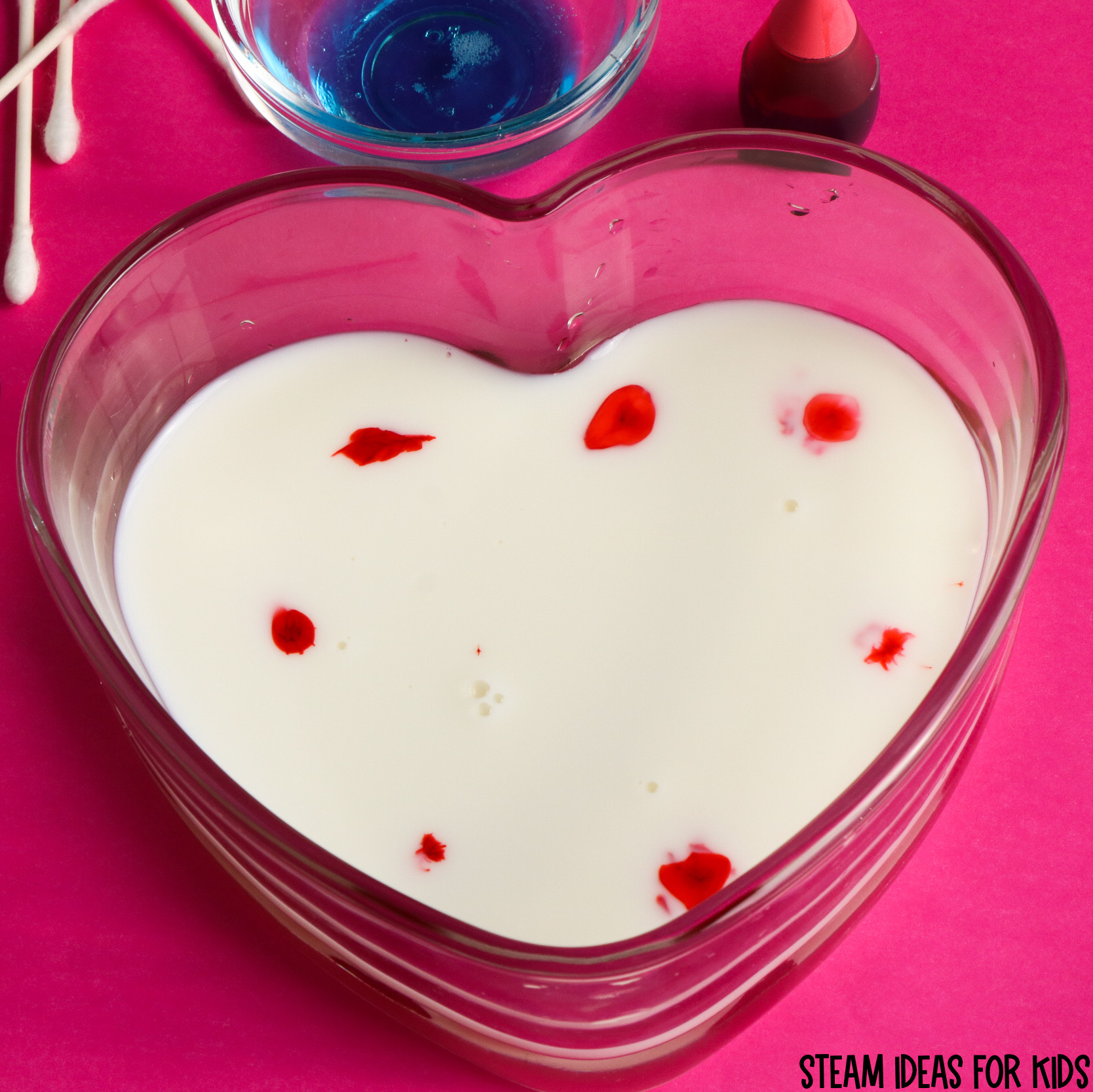
Next, they will add drops of red food coloring in the milk. After adding the food coloring, your kids will dip the cotton swab in the dish soap.
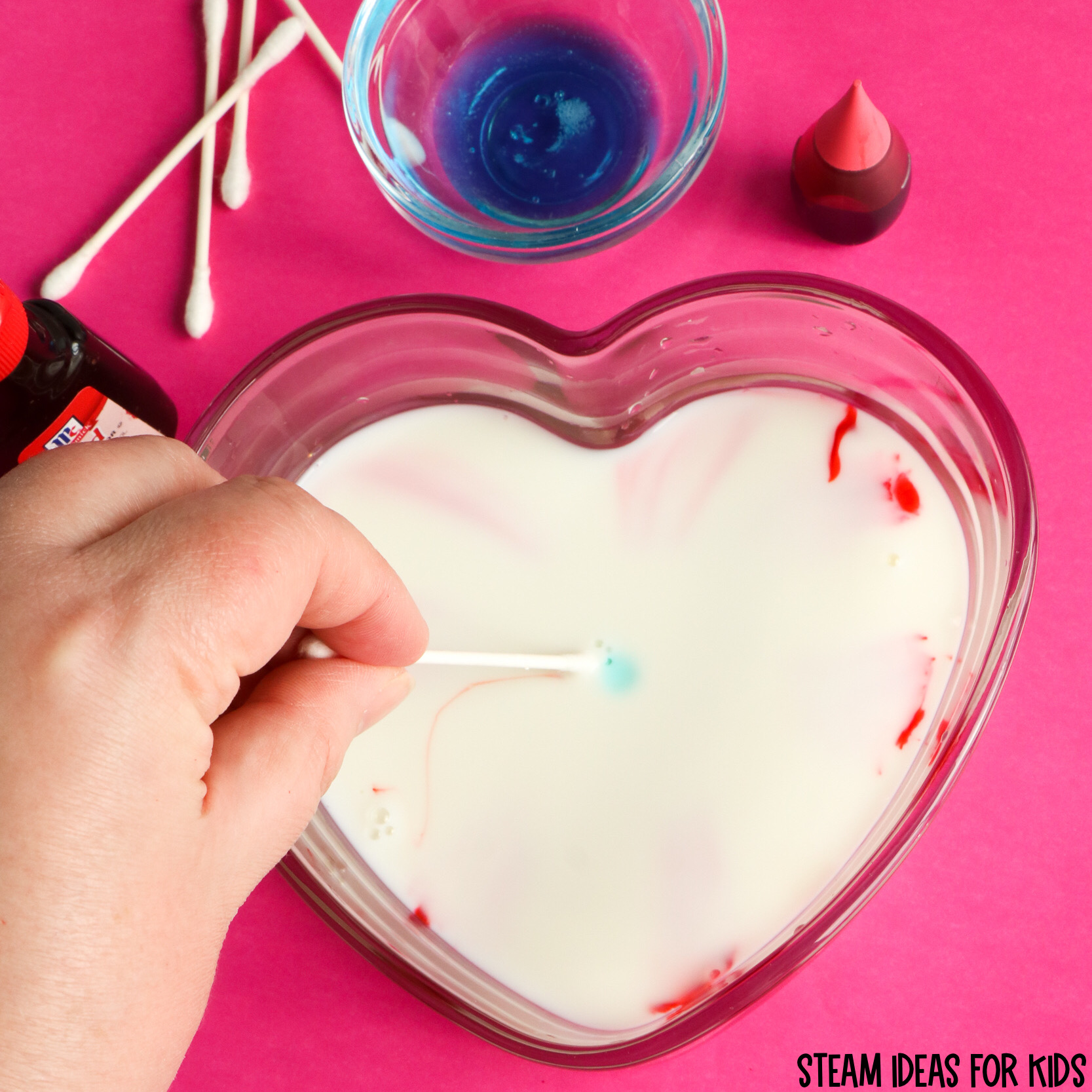
Then, your children will put the cotton swab in the milk. They should press it down in one spot and hold it there for about 15 seconds.
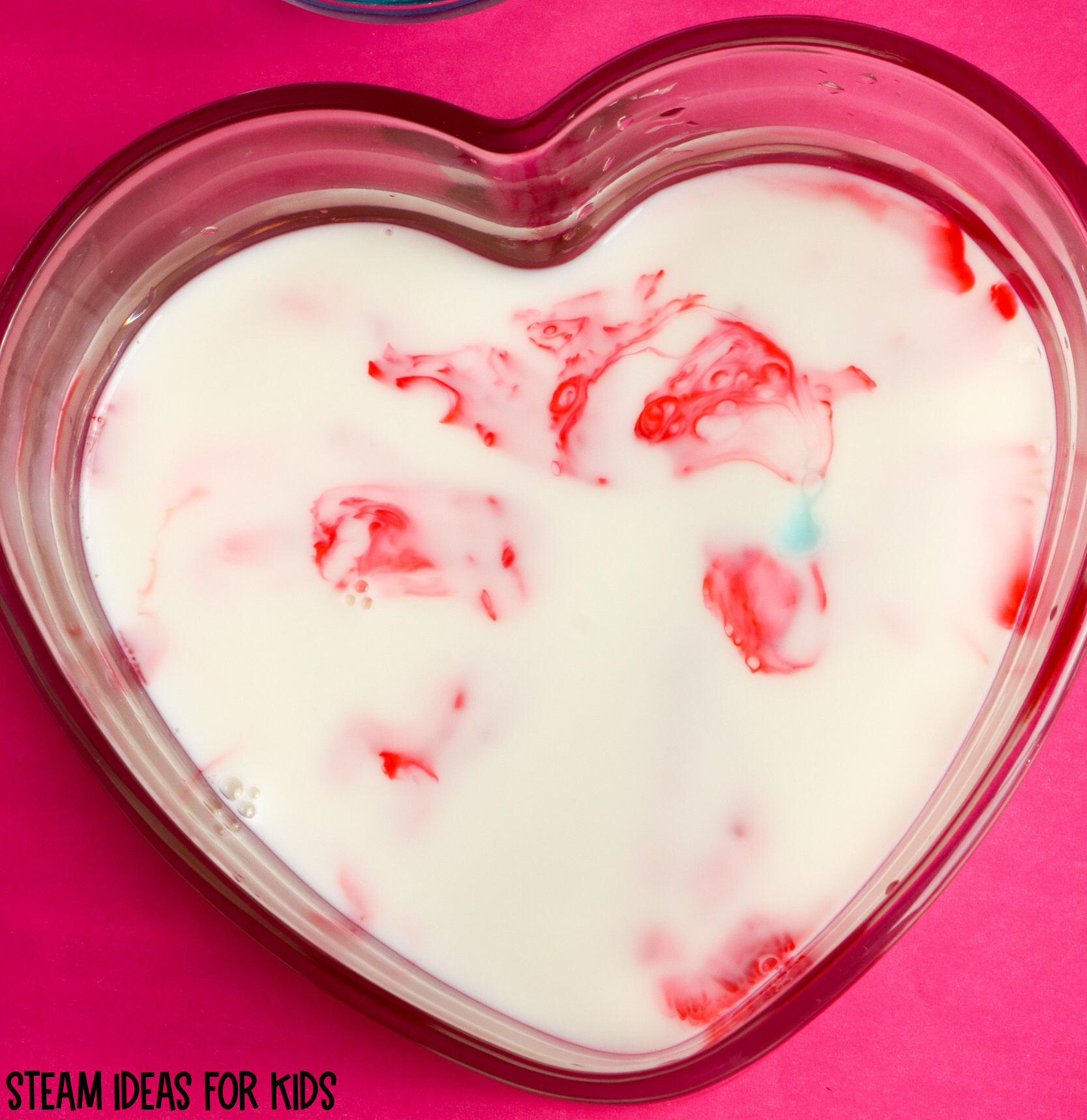
Then, the fun begins… watch what happens as the dish soap interacts with the milk! Isn’t science cool?!
The Science Behind The Experiment:
Milk is made up of minerals, proteins, and fats. When you dip the dish soap into the milk, the fats begin to break up.
The soap molecules move around and try to attach to the fat molecules in the milk.
This process would normally be invisible to you, but the food coloring helps you to see the molecules moving around.
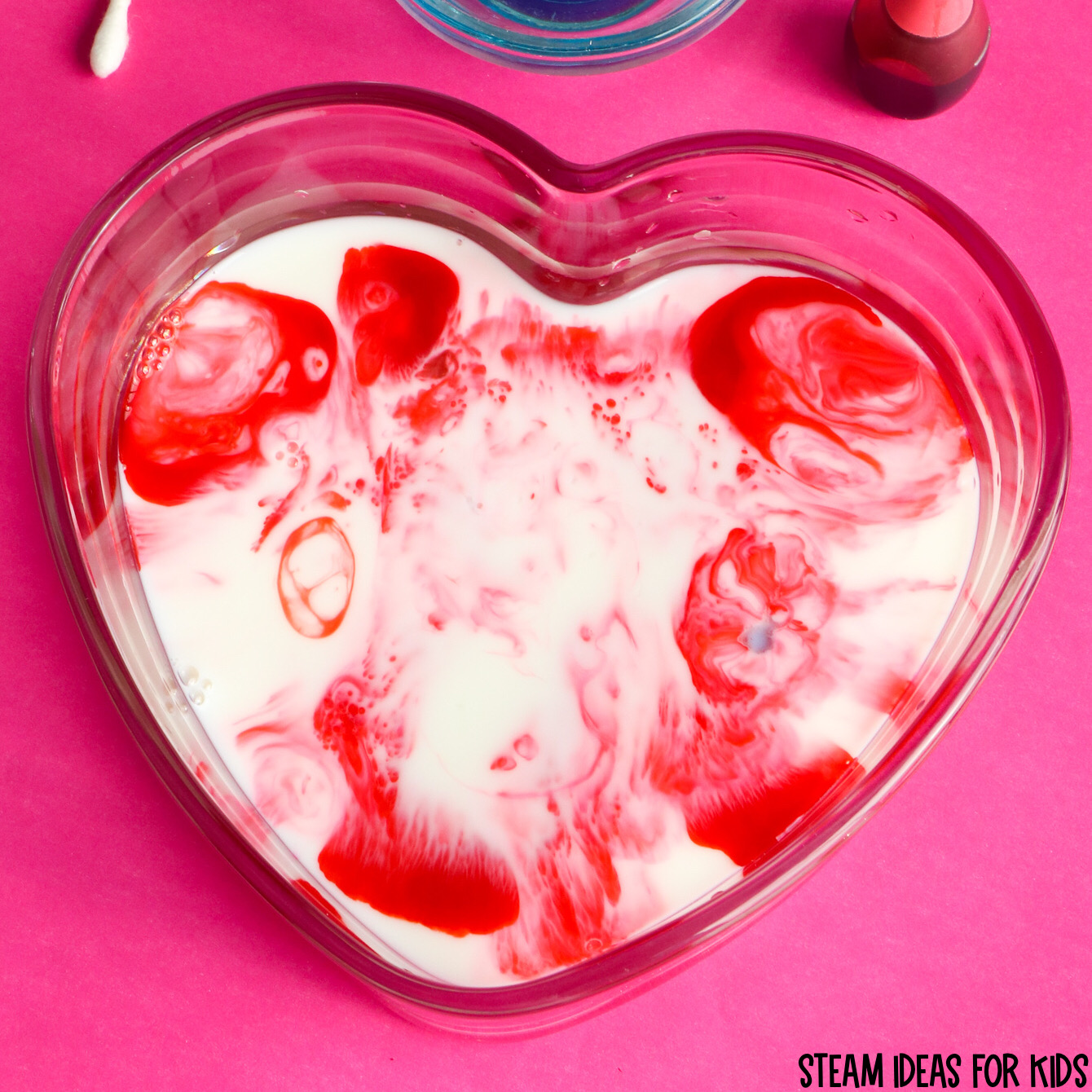
Extend the Valentine’s Day Marbled Milk Science Experiment:
We did this science experiment with a Valentine theme, but you can do this activity at any time of the year.
You can use any shaped bowl and many different colors of food coloring.
You also do different variations of this science experiment by using different types of milk such as 1%, 2%, and whole milk. You can also experiment using different dish soaps.
This Valentine’s Day Marbled Milk Science Experiment is a fun way for your kids to learn about chemical reactions!
Pin It For Later:
Do you want to save this science experiment for later? Pin this to your elementary science board on Pinterest and it’ll be here for when you’re ready!
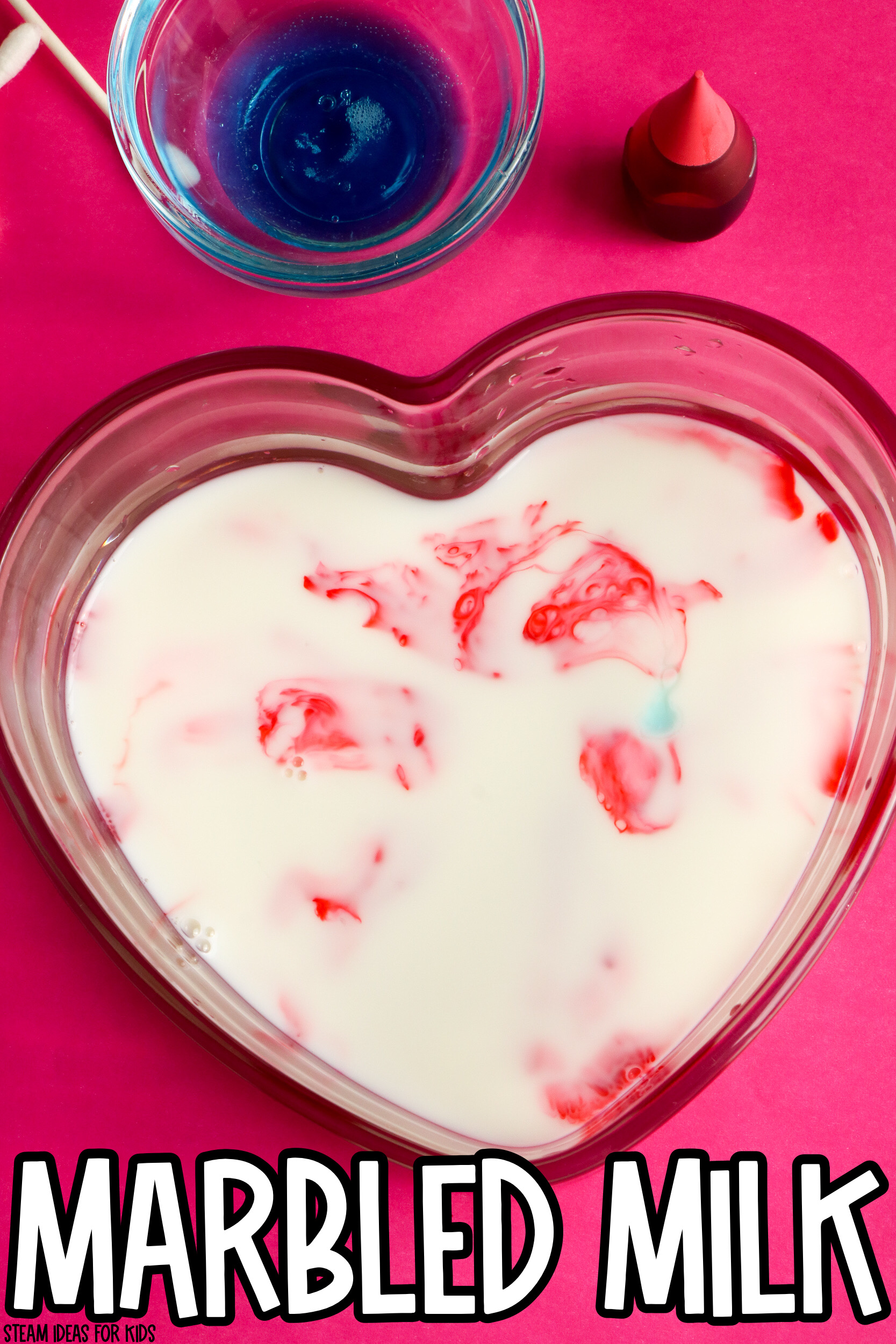
You May Also Like:
Are you looking for fun, hands-on activities for your preschooler? These Preschool Unit Lesson Plans includes an entire year of the most popular themed units! Click on the picture to learn more about this resource!
More Valentine’s Day Activities:
Valentine Monster Letter Recognition Activity
Valentine’s Day Marbled Milk Science Experiment

This Valentine’s Day Marbled Milk Science Experiment is a fun way for your kids to learn about chemical reactions!
Materials
- Heart-Shaped Bowl
- Milk (about 1 cup)
- Red Food Coloring
- Small Bowl
- Liquid Dish Soap
- Cotton Swabs
Instructions
- To begin this science experiment, your kids will fill a heart-shaped bowl or pan with about one cup of milk.
- Next, they will add drops of red food coloring in the milk.
- After adding the food coloring, your kids will dip the cotton swab in the dish soap.
- Then, your children will put the cotton swab in the milk. They should press it down in one spot and hold it there for about 15 seconds.
Notes
Milk is made up of minerals, proteins, and fats. When you dip the dish soap into the milk, the fats begin to break up.
The soap molecules move around and try to attach to the fat molecules in the milk.
This process would normally be invisible to you, but the food coloring helps you to see the molecules moving around.

